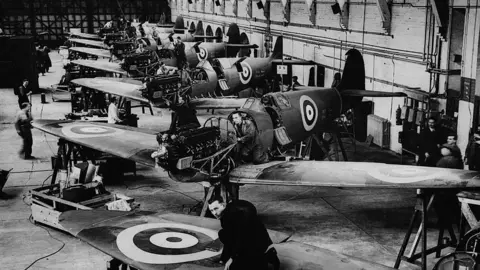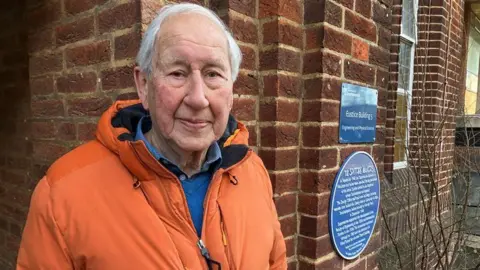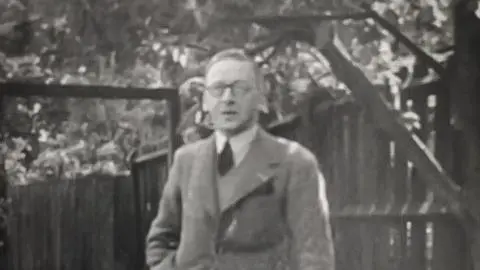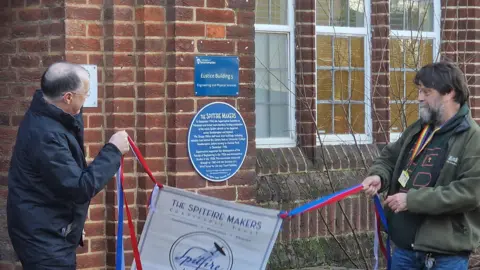Spitfire plaques tell of 'trials and tribulations'
 Getty Images
Getty ImagesA series of plaques describes the "trials and tribulations" people went through during a city's wartime effort to build Spitfires.
The iconic aircrafts were made by Supermarine in a plant in Woolston, Southampton, until mid-1940 - when the factory was partially destroyed during Luftwaffe bombing raids.
Following the attack, Spitfire production was forced to relocate to more than 30 secret pop-up workshops across the city.
Now, 95 years on from the factory bombing-raid, the Spitfire Makers Charitable Trust is commemorating these makeshift factories.

Chris Tong told the BBC his father Cyril, who was a designer of the spitfire at Supermarine, had come home "quite shaken" after one of the factory bombing raids.
"He'd said that there were two unexploded bombs that had came down through the roof of the drawing office - one of them went straight through his desk," he said his mother had told him.
"Had he been sitting there, it would have been a different story."

Mr Tong said the plaques were "very important" as they "give them [young people] the story of all the trials and tribulations that people went through during World War Two in Southampton".
"There was a massive contribution made by these people - it's a terrific story," he added.

A new plaque, which is the 12th of its kind, was unveiled at the University of Southampton's engineering faculty building on Tuesday.
Alan Matlock, chair of The Spitfire Makers Charitable Trust, said: "When the bombing happened in September 1940 then all of the different [Supermarine] departments needed somewhere to go - and the design office had accommodation provided here at the university."
Temporary huts at the university that had been installed following World War One were also taken over and turned into workshops.

"If you add them all up, we have about 30 sites that have been confirmed, it represents a factory that has been spread out across the whole city," Mr Matlock said.
He added that since the plaque scheme began five years ago "so many stories" about the Spitfire and its construction had emerged across the city.
You can follow BBC Hampshire & Isle of Wight on Facebook, X (Twitter), or Instagram.
